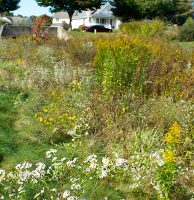
MS4’s Versus MS3’s – What are the Differences?
As we’ve discussed in previous posts, a Municipal Separate Storm Sewer System (MS4) is a publicly-owned storm drain, pipe, ditch, or other means of collecting and transporting rain water (i.e. stormwater) from a town to an outfall that deposits the water into a stream or river. MS4s are regulated by the PA Department of environmental Protection (DEP) and have various requirements for MS4 municipalities and other permit holders.
But what exactly is an MS3 and how does it differ from an MS4? We will explore that question here.
What is a Municipal Storm Sewershed System
A municipal storm sewershed system or MS3 provides the smallest focal area for a municipality relative to their stormwater management program/plan (SWMP) efforts within regulated areas. Each MS3 is tied to a single discharge point (primarily an outfall) that can be monitored for polluted stormwater discharges. Several MS3s transfer to other regulated systems or discharge outside of the municipality’s jurisdiction. If a polluted discharge or presence of pollutants in a segment of the system is encountered, efforts (e.g. public education, illicit discharge detection and elimination (IDD&E) monitoring, good housekeeping practices, developing an Impaired Waters Plan, etc.) will be focused within the MS3 to improve conditions (e.g. meet the pollution reduction objective).
How an MS3 Differs From an MS4
An MS4 is the regulated system (pipes, outfalls, swales, etc.) and is also concerned with systems (basins, privately-owned stormwater pipes, etc.) that are tied to it. An MS3 is the collective whole of the drainage area to the MS4 and ultimately the outfall/discharge point. It is all the sources of influence on discharges (land uses, commercial operations, open space, construction, etc.). Hence, an MS3 is larger than the MS4 and possibly made up of multiple MS4 systems.
Why is an MS3 Important?
An MS3 is a critical unit in facilitating the SWMP, whereas the MS4 permit is all about the nature of a discharge (i.e. the outfalls). Each outfall receives drainage from a specific area that could influence the nature of the discharge, while the MS3 includes all the sources of discharges tied to an outfall. So if we have an issue with a discharge, then field investigations, source controls (from structural BMPs such as a rain garden), and education to the public are then focused on the MS3 to improve the discharge.
When developing your SWMP it is important to consider both the MS3(s) and MS4(s) in your municipality. For more information on the MS3/MS4 services LandStudies provides, visit https://landstudies.com/ms4-permit-support-services.


